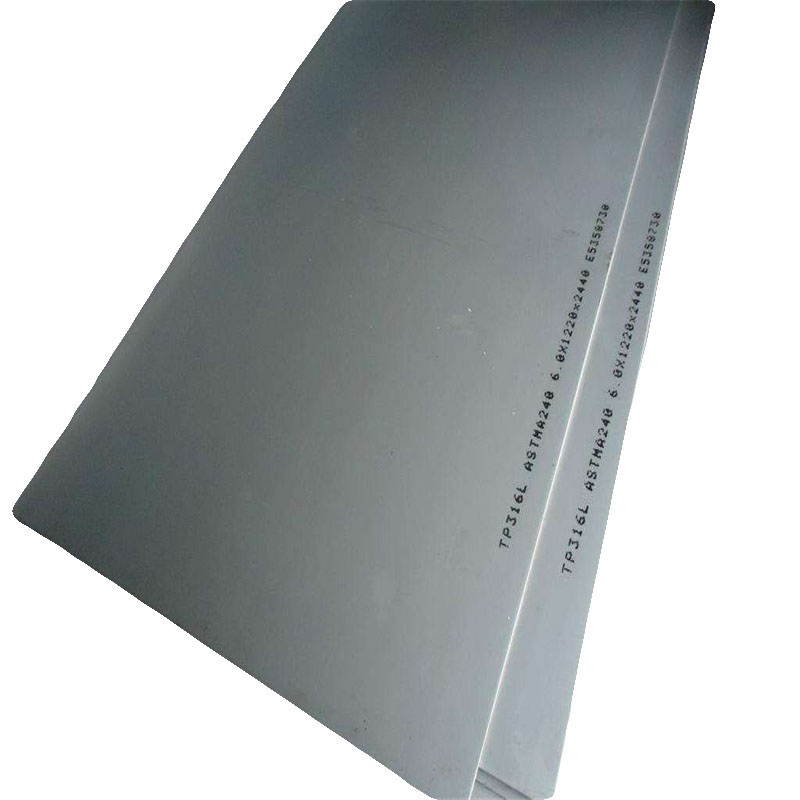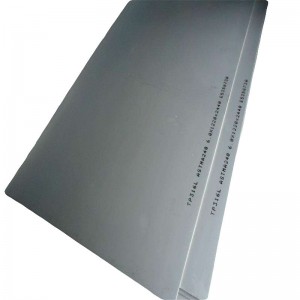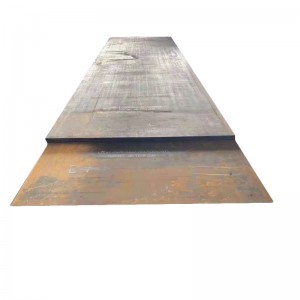Өндөр чанарын зэвэрдэггүй нүүрстөрөгчийн хавтан
Өндөр чанарын зэвэрдэггүй нүүрстөрөгчийн хавтан
Зэвэрдэггүй ган хавтан нь ерөнхийдөө зэвэрдэггүй ган хавтан ба хүчилд тэсвэртэй ган хавтангийн ерөнхий нэр юм.Энэ зууны эхээр гарч ирсэн.Зэвэрдэггүй ган хавтангийн хөгжил нь орчин үеийн аж үйлдвэр, шинжлэх ухаан, технологийн дэвшлийг хөгжүүлэхэд чухал материал-техникийн үндэс суурийг тавьсан.Өөр өөр шинж чанартай олон төрлийн зэвэрдэггүй ган хавтан байдаг.
Энэ нь хөгжлийн явцад аажмаар хэд хэдэн ангиллыг бий болгосон.Бүтцийн дагуу аустенит зэвэрдэггүй ган хавтан, мартенсит зэвэрдэггүй ган хавтан (хур тунадасны хатууралтын зэвэрдэггүй ган хавтан орно), феррит зэвэрдэггүй ган хавтан, аустенит нэмэх ферритик дуплекс зэвэрдэггүй ган хавтан гэсэн дөрвөн ангилалд хуваагддаг.
Ган хавтан дахь үндсэн химийн найрлага эсвэл ган хавтан дахь зарим шинж чанарын элементүүдийн дагуу хром зэвэрдэггүй ган хавтан, хром никель зэвэрдэггүй ган хавтан, хром никель молибдений зэвэрдэггүй ган хавтан, нүүрстөрөгч багатай зэвэрдэггүй ган хавтан, өндөр молибден гэж хуваагддаг. зэвэрдэггүй ган хавтан, өндөр цэвэршилттэй зэвэрдэггүй ган хавтан гэх мэт.
Ган хавтангийн ашиглалтын шинж чанар, ашиглалтын дагуу тэдгээрийг азотын хүчилд тэсвэртэй зэвэрдэггүй ган хавтан, хүхрийн хүчилд тэсвэртэй зэвэрдэггүй ган хавтан, зэврэлтэнд тэсвэртэй зэвэрдэггүй ган хавтан, стресс зэврэлтэнд тэсвэртэй зэвэрдэггүй ган хавтан, өндөр бат бэх зэвэрдэггүй ган хавтан, гэх мэт.
Ган хавтангийн функциональ шинж чанарын дагуу энэ нь бага температурт зэвэрдэггүй ган хавтан, соронзон бус зэвэрдэггүй ган хавтан, чөлөөт зүсэлттэй зэвэрдэггүй ган хавтан, супер хуванцар зэвэрдэггүй ган хавтан гэх мэт хуваагддаг. Одоогийн байдлаар түгээмэл хэрэглэгддэг ангиллын арга нь ган хавтанг ган хавтангийн бүтцийн шинж чанар, ган хавтангийн химийн найрлагын шинж чанар, хоёрын хослолоор ангилна.Энэ нь ерөнхийдөө мартенсит зэвэрдэггүй ган хавтан, феррит зэвэрдэггүй ган хавтан, аустенит зэвэрдэггүй ган хавтан, дуплекс зэвэрдэггүй ган хавтан ба хур тунадасны хатуурдаг зэвэрдэггүй ган хавтан эсвэл хром зэвэрдэггүй ган хавтан, никель зэвэрдэггүй ган хавтанд хуваагддаг.
Целлюлоз, цаасны тоног төхөөрөмж, дулаан солилцуур, механик төхөөрөмж, будах төхөөрөмж, хальс боловсруулах төхөөрөмж, дамжуулах хоолой, далайн эрэг орчмын барилгын гаднах материал гэх мэт.
Зэвэрдэггүй гангийн зэврэлтэнд тэсвэртэй байдал нь түүний хайлшийн найрлага (хром, никель, титан, цахиур, хөнгөн цагаан, манган гэх мэт) болон дотоод бүтцээс ихээхэн хамаардаг.
Бэлтгэх аргын дагуу халуун цувих, хүйтэн цувих гэж хуваагдана.Гангийн зэрэглэлийн бүтцийн шинж чанараар үүнийг 5 ангилалд хувааж болно: Аустенитийн төрөл, АУСТЕНИТИЙН ФЕРРИТИЙН төрөл, ферритийн төрөл, мартенситийн төрөл, хур тунадасны хатууралтын төрөл.
Зэвэрдэггүй ган хавтан нь гөлгөр гадаргуутай, өндөр уян хатан чанар, хатуулаг, механик бат бөх чанар, хүчил, шүлтлэг хий, уусмал болон бусад орчны зэврэлтэнд тэсвэртэй.Энэ нь зэвэрдэггүй, гэхдээ огт зэвэрдэггүй хайлш гангийн төрөл юм.Зэвэрдэггүй ган хавтан нь тогтворгүй никель хромын хайлш 304-тэй төстэй ерөнхий зэврэлтийг эсэргүүцэх чадвартай. Хромын карбидын температурын хязгаарт удаан хугацаагаар халаах нь хатуу идэмхий орчинд 321 ба 347 хайлшийн зэврэлтэнд нөлөөлж болзошгүй.
Энэ нь ихэвчлэн өндөр температурт ашиглагддаг.Өндөр температурт хэрэглэхэд бага температурт мөхлөг хоорондын зэврэлтээс урьдчилан сэргийлэхийн тулд хүчтэй мэдрэмжийн эсэргүүцэл шаардлагатай.
Зэвэрдэггүй гангийн хувьд эхлээд хар арьсыг ng-9-1 химийн бодисоор, тосон толботой бол эхлээд nz-b тос арилгах king → усаар угаах → электролитийн нарийн өнгөлгөөний тусламжтайгаар тосыг арилгана (энэ уусмалыг ажлын зориулалтаар шууд ашигладаг. шингэн, температур 60 ~ 80 ℃, бэлдэцийг анодоор өлгөх, одоогийн Да нь 20 ~ 15А / DM2, катод нь хар тугалганы сурьма хайлш (8% -ийг оруулаад) Хугацаа: 1 ~ 10 минут, өнгөлөх → усаар угаах → 5 ~ 8% давсны хүчлээр хальс хуулах (өрөөний температур: 1 ~ 3 секунд) → усаар угаах → үс хатаагч.


















